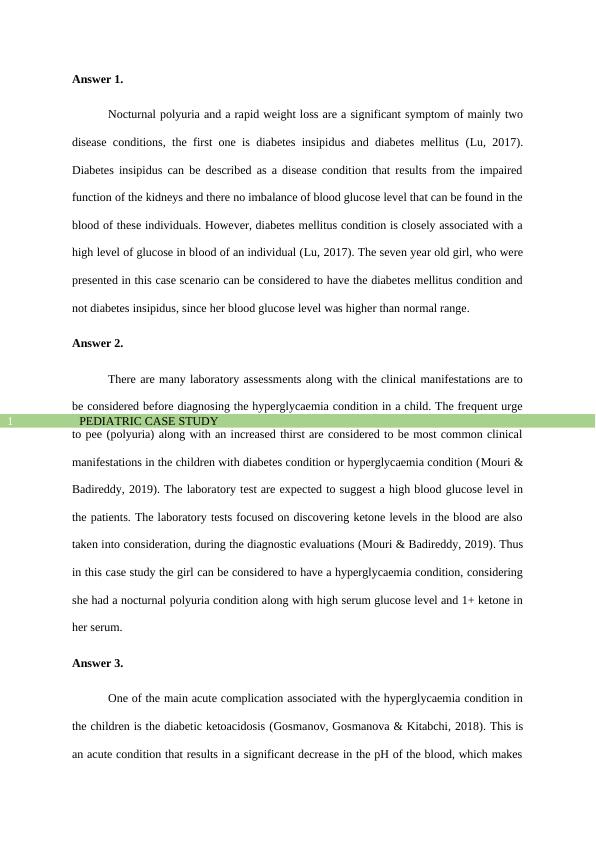Pediatric Case Studies With Answers -
Added on 2022-09-07
4 Pages799 Words35 Views
End of preview
Want to access all the pages? Upload your documents or become a member.
Nursing Intervention.
|13
|2543
|2
Mrs. Brown’s Case Study: Understanding Diabetes Mellitus, DKA, and HHS
|8
|1537
|500
NUR251 Assessment | Nursing Care Plan
|10
|2875
|17
Overview of Diabetes - PDF
|10
|1157
|266

